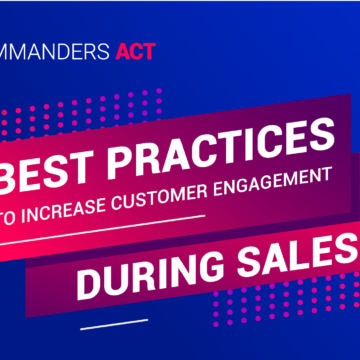The importance of data layer granularity in your TMS
14/09/2018 |

Don’t be frightened by the rather technical and hardcore title of this post: data layer granularity is the starting point for optimising all your digital campaigns and your omni-channel strategy as a whole.
And I know you’re wondering: “if it’s that important, why have I never heard about it?”.
Well, that’s exactly why we wanted to dedicate an entire post to this essential topic, given its impact on your acquisition campaign’s current and future results, and ultimately, your advertising budget.
Let’s quickly revisit the concept of a data layer and see where it fits into your web pages’ infrastructure.
The data layer sits just before your TMS (Tag Management system, or Tag Container) and plays the key role of providing the TMS with all the right information, in the right order and at the right time. That sounds rather like something in your marketing and ad strategy, no?
The data layer’s role is similar to a library or dictionary that is entirely devoted to all your digital marketing applications as well as your acquisition and communication actions.
A well-designed and organised data layer will be able to give the correct information to your TMS, which will in turn use it to trigger a specific tag when needed, enabling you to do two things:
- Leverage this information to maximise the efficiency of one of your acquisition levers
- Share this information with one of your partners
Let’s now look at some use cases that should shed some real-world light on this crucial subject.
You are a marketer; your product catalogue has thousands of items and you are lucky enough to be able to include offline CRM data into your digital campaigns. You now want to refine your acquisition campaigns to avoid unnecessary spending, which surely requires a DMP? Not exactly! Thanks to the TMS solution you have chosen, in this case the market leader Tag Commander, that you have combined with an exhaustive data layer, you can already implement and achieve the majority of your objectives.
If your data layer can differentiate between a client and lead (based on your CRM) and if the entire conversion tunnel (page category, product, basket, etc.) is included, you will be able to avoid retargeting an existing and loyal customer who just added items to their basket. The “existing client + CRM segment” information along with their position in the conversion tunnel (basket) will be sent to the Tag Commander TMS, which will not trigger the retargeting tag and thus avoid all marketing spend on this lever.
You are a publisher of a travel website that deals with a large number of destinations across the globe, and you also have a price comparison tool (flights, hotels, etc.) in order to monetise your qualified audience.
The mix between tourist destination content and the price comparison tool affords you a huge amount of data that you want to monetise to create an extra revenue stream.
Get your data in order
Your data layer’s granularity will have a considerable impact on your sales potential. For example, if you put all your “flight/tickets” data into one variable (i.e. one piece of information in the data layer), you will have no choice but to share all this data with your partners who want to acquire and leverage it.
However, if you create a separate variable for each destination, and the Mauritius tourism board wants to target all your visitors who have shown an interest in their country (by viewing content or searching with the price comparison tool), it will be extremely easy to trigger the tourism office tag only for this “Mauritius” audience.
So, don’t waste any more time before optimising your website’s data layer and adopting a premium TMS, such as the one offered by Commanders Act 😉
Michael Froment












